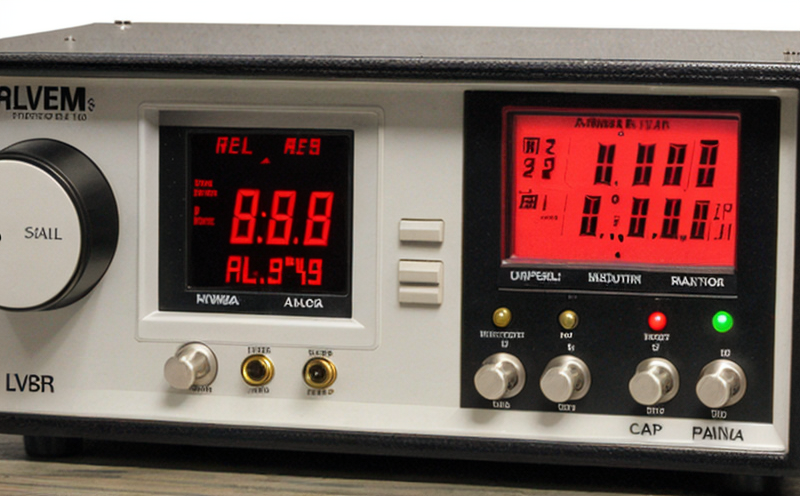ASTM E1812 Calibration of Scintillation Counters
The ASTM E1812 standard provides a comprehensive procedure for calibrating scintillation counters used in radiation detection. This service is essential to ensure the accuracy and reliability of radiological measurements, which are critical in various industries such as nuclear power, environmental monitoring, medical physics, and research laboratories.
Scintillation counters detect ionizing radiation by converting the energy released from interactions with a scintillating material into light pulses. These pulses are then converted to electrical signals for analysis. The accuracy of these instruments is paramount in applications where precision measurement can affect safety, regulatory compliance, and data integrity.
The ASTM E1812 calibration process involves several steps that ensure the instrument's performance meets specified standards. It begins with the selection of appropriate sources of gamma radiation, which are used to determine the efficiency and energy resolution of the scintillation counter. The standard specifies the use of sources like 90Sr/90Y, 137Cs, or 241Am-Be. These sources emit gamma rays at specific energies, allowing for detailed calibration.
The procedure also involves placing the scintillation counter in a known radiation field and measuring the response. The measured count rates are then compared against theoretical values calculated based on the instrument's specifications and the properties of the radioactive source. Any discrepancies between the measured and expected responses indicate areas where adjustments may be necessary to bring the instrument back into compliance.
The calibration process is not a one-time event; it requires periodic checks to account for drift in performance over time due to aging, environmental factors, or other variables. Regular calibrations ensure that the instruments continue to meet the stringent requirements set forth by industry standards and regulatory bodies.
For industries such as nuclear power plants and medical facilities, where precision is critical, ASTM E1812 calibration ensures compliance with international standards like ISO 9001 for quality management systems. This service plays a vital role in maintaining safety protocols and ensuring accurate data collection which can impact regulatory compliance.
The process involves detailed documentation of the calibration procedure, including the type of source used, the measurement results, and any adjustments made to the instrument. This documentation is essential for traceability and audit purposes.
Why It Matters
The accuracy and reliability of scintillation counters are crucial in ensuring that measurements of ionizing radiation are consistent with international standards. ASTM E1812 calibration ensures that these instruments meet the highest level of precision, which is essential for industries such as nuclear power generation, medical physics, and environmental monitoring.
Accurate measurements provide critical data for decision-making processes, whether it's in assessing occupational exposure levels or determining the safety of materials used in nuclear facilities. Inaccurate readings can lead to misinformed decisions that may have severe consequences for both public health and the environment.
By adhering to ASTM E1812 standards, laboratories and testing facilities demonstrate their commitment to quality and compliance with regulatory requirements. This not only enhances their reputation but also ensures they meet the expectations of clients who rely on accurate radiation detection data.
The calibration process also helps in identifying any potential issues early on, allowing for corrective actions before they escalate into more significant problems. This proactive approach contributes to maintaining high standards of performance and reliability across all operations involving scintillation counters.
Benefits
- Enhanced Accuracy: Ensures precise measurement, critical for regulatory compliance.
- Precision Control: Maintains consistent results over time, supporting reliable data collection.
- Safety Assurance: Protects personnel and the environment by ensuring accurate readings of ionizing radiation levels.
- Regulatory Compliance: Meets international standards like ISO 9001 and ASTM E1812, enhancing credibility.
- Data Integrity: Provides consistent and reliable data, which is essential for research and development.
- Cost Efficiency: Prevents costly errors by identifying issues early in the calibration process.
- Client Satisfaction: Ensures that clients receive accurate results, enhancing trust and loyalty.
The benefits of ASTM E1812 calibration extend beyond mere compliance; they contribute to operational efficiency and safety. By ensuring that scintillation counters operate at their peak performance levels, this service helps organizations avoid potential pitfalls associated with inaccurate measurements.
Industry Applications
- Nuclear Power Plants: Ensuring the accuracy of radiation detectors for monitoring and safety.
- Medical Physics: Accurate calibration is essential for treatment planning and patient care.
- Environmental Monitoring: Reliable data on radioactive contamination levels are crucial for public health.
- Research Laboratories: Precision measurements support the development of new technologies and treatments.
- Oil & Gas: Calibration is necessary for monitoring radiation in exploration and production activities.
In each of these sectors, accurate calibration of scintillation counters using ASTM E1812 ensures that critical measurements are reliable. This reliability translates into better decision-making processes, enhanced safety measures, and improved operational efficiency.





